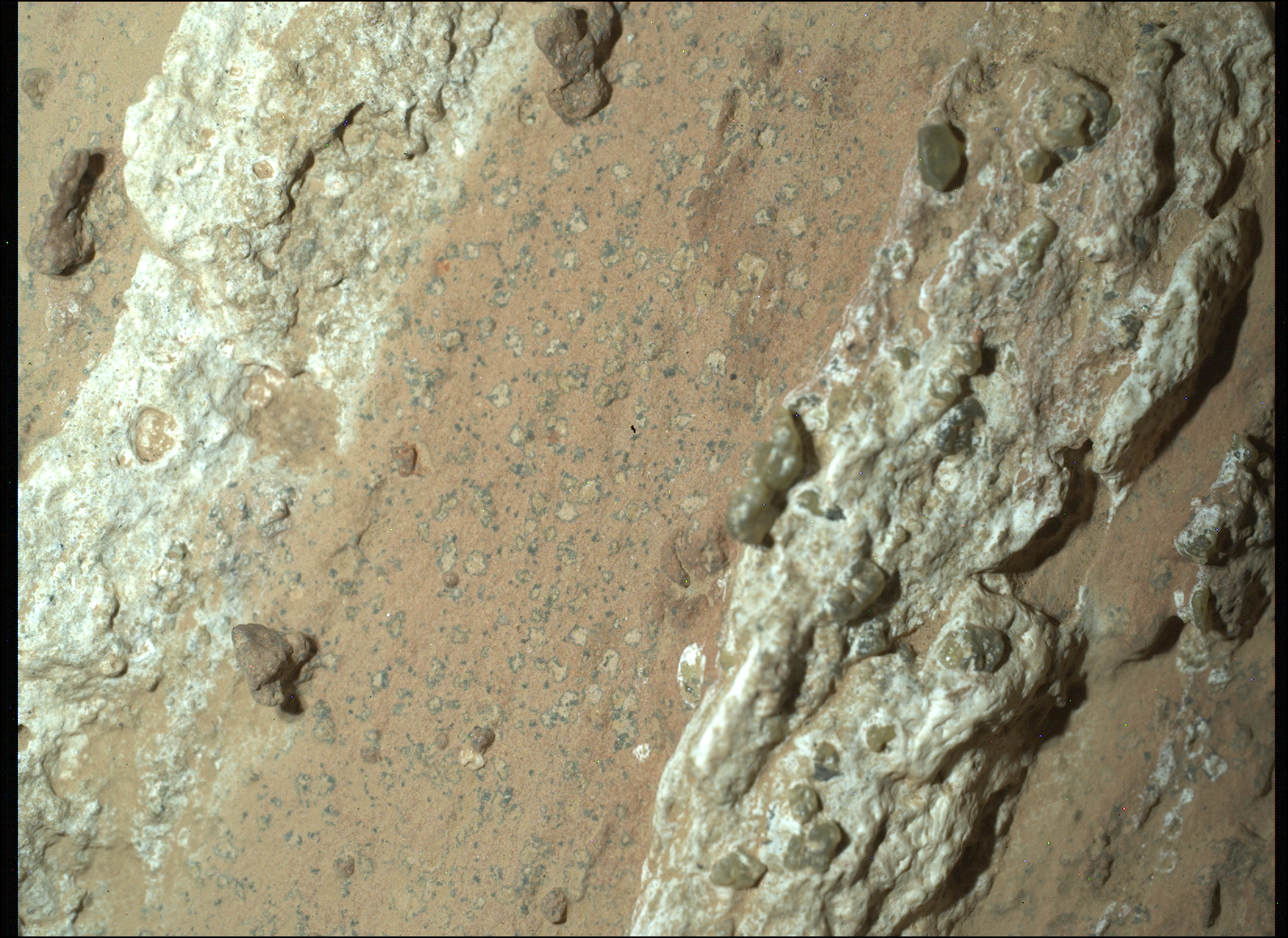
NASA's Perseverance rover may have found signs of ancient life in a rock on Mars; the mission team's scientists are ecstatic, but remain cautious as further analysis is needed to confirm the discovery.
The rover has come across an intriguing, arrowhead-shaped rock that hosts chemical signatures and structures that could have been formed by microbial life billions of years ago, when Mars was significantly wetter than it is today. Inside the rock, which scientists have nicknamed "Cheyava Falls," Perseverance's instruments detected organic compounds, which are precursors to the chemistry of life as we know it. Wisping through the length of the rock are veins of calcium sulfate, which are mineral deposits that suggest water — also essential for life — once ran through the rock.
The rover also found dozens of millimeter-sized splotches, each surrounded by a black ring and mimicking the appearance of leopard spots. These rings contain iron and phosphate, which are also seen on Earth as a result of microbe-led chemical reactions.
"These spots are a big surprise," David Flannery, an astrobiologist and member of the Perseverance science team from the Queensland University of Technology in Australia, said in a statement. "On Earth, these types of features in rocks are often associated with the fossilized record of microbes living in the subsurface."
Related: 'An oasis in the desert': NASA's Curiosity rover finds pure sulfur in Martian rocks

"We've never seen these three things together on Mars before," Morgan Cable, a scientist on the Perseverance team, said in a video NASA posted to YouTube today (July 25).
Cheyava Falls sits at the edge of an ancient, 400-meter-wide (437-yard-wide) river valley named Neretva Vallis. Scientists suspect this ancient channel was carved out long ago due to water gushing into Jezero Crater; Neretva Vallis runs along the inner wall of this region. In one possible scenario, mud that already possessed organic compounds got dumped into the valley and later cemented into the Cheyava Falls rock, which Perseverance sampled on July 21. A second episode of water oozing into the formed rock would have created the object's calcium sulfate veins and black-ringed spots the team sees today.
To be clear, the rock's visible features aren’t irrefutable evidence of ancient microbial life on Mars — not yet, at least. It is possible, for instance, that the observed calcium sulfate entered the rock at uninhabitably high temperatures, perhaps during a nearby volcanic event. However, whether such non-biological chemical reactions could have resulted in the observed black-ringed spots is an open question, the scientists say.
"This trip through the Neretva Vallis riverbed paid off as we found something we've never seen before, which will give our scientists so much to study," Nicola Fox, the associate administrator of NASA's Science Mission Directorate, said in the statement.
"We have zapped that rock with lasers and X-rays and imaged it literally day and night from just about every angle imaginable," Ken Farley, Perseverance project scientist of Caltech in California, said in the statement. "Scientifically, Perseverance has nothing more to give."
To fully grasp what really unfolded in the ancient river valley billions of years ago, scientists are keen to get the Cheyava Falls sample to Earth, where it can be scrutinized with powerful instruments that Perseverance’s limited suite doesn't have.
The complex Mars Sample Return effort, however, has run into many snags in recent months after its costs spiked to $11 billion. In its current form, the program requires multiple launches to Mars to place a vehicle on the Red Planet, after which either Perseverance will travel to the vehicle and drop off its collected samples, or pop those samples over to a retrieval helicopter that can complete the handoff. Then, an ascender would launch the samples into orbit, where a spacecraft would collect them and return them to Earth.
NASA assessed various simpler alternatives from industry and academic groups and awarded $1.5 million contracts to seven companies looking into the endeavor; three of the agency's own research centers are carrying out studies as well.







